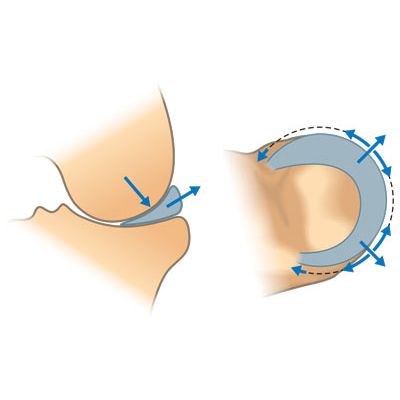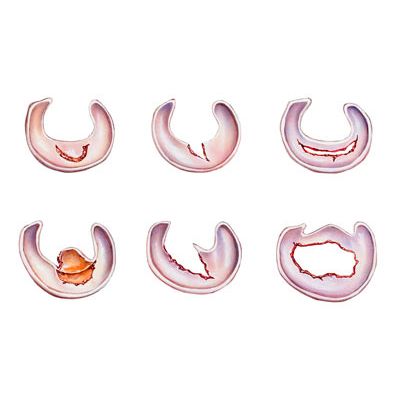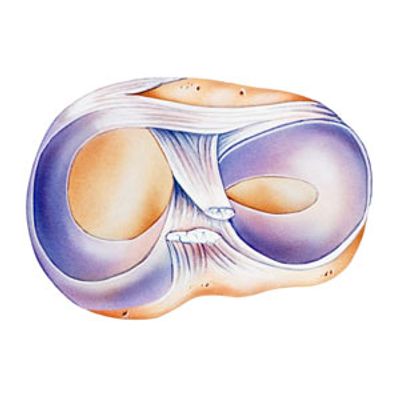

Orthonika products
Total Meniscus Replacement Technology
Orthonika`s Total Meniscus Replacement is based on a unique design and proprietary high strength polymers and constructions which replicates not only the bulk macroscopic geometry of the meniscus, but also the underlying microstructure and anisotropic properties affiliated with the real tissue. Orthonika’s ground breaking implant design is unique, in that it features an inherent attachment mechanism incorporated into the underlying microstructure which allows for optimal load transfer and recovery in the knee joint during mobility. Our composite structure allows load redistribution as in the natural meniscus and thus creating a new benchmark for the replacement of load-bearing tissue within a joint. The Total Meniscus Replacement is able to replicate the structure and function of the natural meniscus by mimicking the `hoop stress mechanism` which is key to the correct functioning of the tissue and the preservation of the underlying articular cartilage.
Meniscus Injury
Usually meniscus injuries occur in the form of a meniscal tears. These can be acute, when the tear is due to trauma and usually consists of a forceful twist or rotation to the knee such as aggressive pivoting, kneeling or deep squatting. Around one third of all meniscal tears are believed to be acute1. Tears can also be chronic (degenerative) and these usually occur in older patients when the meniscus has weakened and generally undergone a degeneration in mechanical properties becoming less elastic over time.
The Meniscus of the Knee
The menisci are two wedge-shaped semilunar discs of fibrocartilaginous tissue. Menisci are functionally a dynamic tissue where they aid in load transmission and distribution, shock absorption, increasing joint congruence and stability, as well as providing lubrication in the joint. Each knee has two menisci, a medical meniscus and a lateral meniscus. The medial meniscus is located towards the inside of the knee and it has a more distinctive crescent shape than the lateral, which is located on the outside of the knee. Both menisci are attached to the tibia by the meniscotibial ligaments with the medial meniscus also being firmly attached to the medial collateral ligament (the lateral meniscus is not attached to the lateral collateral ligament). This makes the medial meniscus less mobile and more prone to injury compared to the lateral meniscus, especially due to valgus and torsional movements.



